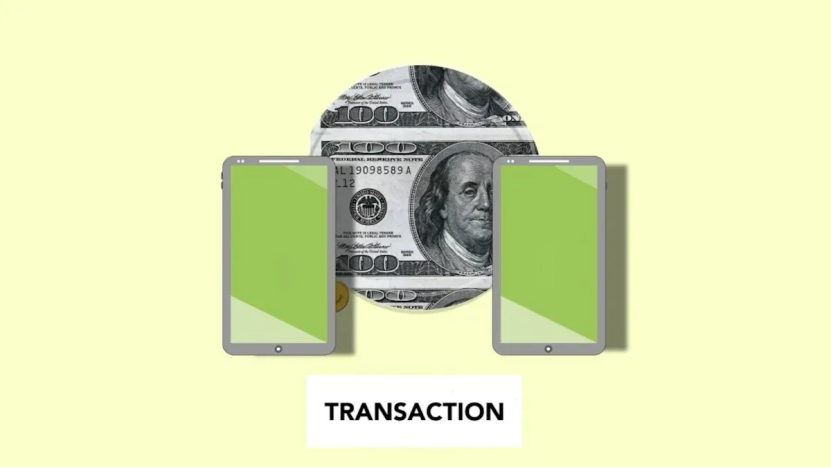How Telegraphic Transfers Work for International Money Transfers
Author:XTransfer2025.04.10Telegraphic Transfers
A telegraphic transfer is an electronic method used to send money across borders. It allows you to transfer funds securely and efficiently, making it a trusted choice for international transactions. Whether you are an individual sending money to family abroad or a business paying overseas suppliers, this method ensures reliability and speed. Its electronic nature eliminates the need for physical cash, reducing risks and delays. By using telegraphic transfers, you can streamline your financial dealings and focus on what matters most.
What Is a Telegraphic Transfer?
Definition and Purpose
A telegraphic transfer is an electronic method for sending money, primarily used for international transactions. It allows you to transfer funds securely and quickly, often completing the process within two to four business days. This method operates through networks like SWIFT, which ensures reliability and safety. In the U.S., telegraphic transfers are often associated with SWIFT transfers, while in the U.K., they are linked to CHAPS transfers. These systems make telegraphic transfers ideal for large or urgent payments, especially across borders. Whether you are an individual or a business, this method simplifies international money transfers by offering high transaction limits and rapid processing times.
Historical Background and Modern Usage
Telegraphic transfers have evolved significantly over time. Initially, they relied on telegram-based communications in the early 1900s. By the mid-20th century, telex and telephone networks replaced telegrams, enabling faster communication. The late 20th century saw the introduction of electronic banking networks like SWIFT, which revolutionized the process. Today, telegraphic transfers are synonymous with wire transfers or bank transfers. Modern systems have replaced telegraph lines with dedicated electronic networks, enhancing both speed and security. This evolution has made telegraphic transfers one of the most reliable methods for international transactions.
Key Features of Telegraphic Transfers
Telegraphic transfers offer several key features that make them a preferred choice for international money transfers. They are an electronic payment method, ensuring convenience and ease of use. Transfers typically take two to four days to complete, making them one of the fastest options for large transactions. High transaction limits allow you to send significant amounts of money, which is especially useful for businesses. Additionally, telegraphic transfers support both domestic and international transactions, making them versatile. The process is designed to be secure, relying on dedicated networks to protect your funds.
How Do Telegraphic Transfers Work?

Step-by-Step Process
Initiating the Transfer
To start a telegraphic transfer, you need to provide your bank with essential details. These include the recipient's name, bank account number, and the amount you wish to send. The bank may also ask for the recipient's SWIFT code or IBAN, depending on the destination. Once you submit this information, the bank processes your request and begins the transfer.
Role of Intermediary Banks
Intermediary banks play a crucial role in international transactions. When your bank cannot directly connect with the recipient's bank, it uses intermediary banks to complete the transfer. These banks act as middlemen, ensuring the funds reach the correct destination. However, their involvement can sometimes lead to additional transfer fees and delays.
Receiving the Funds
The recipient's bank receives the transfer request and credits the funds to the recipient's account. This step may involve currency conversion if the transfer is between countries with different currencies. The recipient can then access the funds once the process is complete.
Security Measures in International Transactions
Telegraphic transfers prioritize security to protect your funds and personal information. Banks use secure networks like SWIFT to transmit data. These networks ensure that only the sending and receiving banks can access the transfer details. Additionally, banks follow strict regulations to prevent fraud and money laundering. For example, SWIFT undergoes annual security audits to maintain compliance with international standards.
Common Challenges and Solutions
Telegraphic transfers can face challenges like high fees, delays, and unpredictable processing times. Intermediary banks often contribute to these issues by adding extra costs and slowing down the process. To overcome these challenges, consider using financial services that offer lower fees and faster processing. Building strong relationships with your bank can also help streamline the transfer process.
Costs and Fees in Telegraphic Transfers
Breakdown of Costs
Telegraphic transfers involve several types of fees that can impact the total cost of your transaction. Understanding these fees helps you plan better for international money transfers. Below is a detailed breakdown of the common costs associated with this method:
These fees can vary depending on the banks involved and the specifics of your transfer. For example, intermediary banks may add unexpected costs, especially for transfers involving multiple currencies.
Factors Influencing Costs
Several factors determine the total cost of a telegraphic transfer. These include the banks involved, the transfer destination, and the currency exchange rates. Below is a summary of the key factors:
The type of charge code you select also affects the cost. For instance, choosing "OUR" means you cover all fees, while "BEN" shifts the costs to the recipient. "SHA" splits the fees between both parties.
Time frames for Telegraphic Transfers

Typical Processing Times
Telegraphic transfers generally take between one and five business days to complete. The exact timeframe depends on factors such as the origin and destination of the transfer. For example, transfers between countries with well-connected banking systems often process faster. However, delays may occur due to time zones, bank cut-off times, or fraud prevention checks.
Here’s a quick overview of typical processing times reported by various sources:
While most transfers fall within this range, you should always confirm with your bank for a more accurate estimate.
Factors That Affect Speed
Several factors influence how quickly a telegraphic transfer reaches its destination. Understanding these can help you anticipate potential delays:
For instance, if your transfer involves multiple currencies and intermediary banks, it may take longer than a direct transfer between two major financial institutions.
How to Expedite International Money Transfers
You can take steps to speed up your telegraphic transfer and ensure it reaches the recipient as quickly as possible. Here are some practical tips:
Submit Early: Initiate your transfer early in the day to avoid missing your bank’s cut-off time.
Provide Accurate Details: Double-check the recipient’s information, including their SWIFT code and IBAN, to prevent delays.
Choose Direct Routes: Opt for banks with direct connections to the recipient’s bank to minimize the need for intermediary banks.
Use Local Currency: Sending money in the recipient’s local currency can reduce processing time.
Request Priority Service: Some banks offer expedited processing for an additional fee, which can significantly reduce transfer times.
Information Required for a Telegraphic Transfer
When initiating a telegraphic transfer, you must provide accurate and complete information. Missing or incorrect details can delay the process or result in failed transactions. Below is a breakdown of the essential information required.
Sender and Recipient Details
You need to provide your full name and bank account details as the sender. The recipient’s information is equally important. This includes their full name, address, and contact details. Banks use this information to verify the identities of both parties and ensure compliance with international regulations.
Bank Account Information
SWIFT Code
The SWIFT code is a unique identifier for banks involved in international transactions. It ensures that the funds are routed to the correct financial institution. You can find this code on your bank’s website or by contacting their customer service. For example, a SWIFT code might look like this: CHASUS33.
IBAN
The International Bank Account Number (IBAN) is another critical piece of information. It identifies the recipient’s bank account and ensures the transfer reaches the correct destination. IBANs are primarily used in Europe and other regions that follow international banking standards. Always double-check the IBAN to avoid errors.
Additional Documentation (if applicable)
Some countries or banks may require extra documentation for telegraphic transfers. For instance, you might need to provide a purpose of payment or additional codes specific to the recipient’s country. These requirements help comply with local regulations and prevent fraud.
Comparing Telegraphic Transfers to Other Methods
Telegraphic Transfers vs. Wire Transfers
Telegraphic transfers and wire transfers are often used interchangeably, but they have distinct differences. Both methods allow you to send money internationally, but telegraphic transfers use a broader range of systems, while wire transfers rely specifically on the SWIFT network. This makes wire transfers highly secure and slightly faster, especially for domestic transactions. However, wire transfers often come with higher fees, which can make telegraphic transfers a more cost-effective option for some users.
When deciding between these two methods, consider your priorities. If speed and security are your main concerns, wire transfers may be the better choice. For lower costs and broader accessibility, telegraphic transfers could be more suitable.
Telegraphic Transfers vs. Online Money Transfer Services
Online money transfer services like PayPal or Wise offer a modern alternative to telegraphic transfers. These services often provide lower fees and faster processing times, especially for smaller amounts. However, telegraphic transfers remain a better option for large transactions or when dealing with banks that do not support online platforms.
Online services excel in convenience and affordability, but telegraphic transfers offer higher transaction limits and broader international reach. Your choice depends on the amount and purpose of the transfer.
Pros and Cons of Telegraphic Transfers
Telegraphic transfers have several advantages, but they also come with challenges. Understanding these can help you decide if this method suits your needs.
Telegraphic transfers are reliable and secure, making them ideal for large or critical transactions. However, you should be prepared for potential delays and higher fees, especially when intermediary banks are involved.
Telegraphic transfers simplify sending money abroad by offering security, reliability, and efficiency. They work well for domestic and international money transfers, especially when speed and high transaction limits matter. Compared to ACH transfers, telegraphic transfers excel in international payments but may involve higher costs. For example, telegraphic transfers typically take 1–5 business days, while ACH transfers are faster for domestic transactions.
To choose the best method, assess your needs. If you prioritize international money transfer speed, telegraphic transfers are ideal. For smaller, domestic payments, ACH transfers may save costs. Always verify fees and processing times before initiating a transfer.
FAQ
1. What is the difference between a SWIFT code and an IBAN?
A SWIFT code identifies a specific bank during international transfers. An IBAN, on the other hand, identifies an individual’s bank account in international transactions. You need both for most cross-border payments.
2. Can you cancel a telegraphic transfer after initiating it?
Yes, you can cancel it, but only before the funds are processed. Contact your bank immediately. Be aware that cancellation fees may apply, and refunds might take time.
3. Why do telegraphic transfers take several days to process?
Transfers involve multiple banks, including intermediary banks. Each bank verifies details and processes the transaction. Time zones, currency conversions, and compliance checks also contribute to delays.
4. Are telegraphic transfers safe for large transactions?
Yes, they are secure. Banks use encrypted networks like SWIFT to protect your funds and data. Always double-check recipient details to avoid errors or fraud.
5. How can you track the status of a telegraphic transfer?
Ask your bank for a tracking number or reference code. Use this code to monitor the transfer’s progress. Some banks also provide online tracking tools for convenience.
Related content